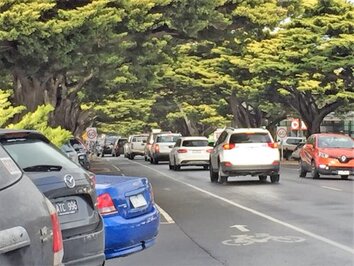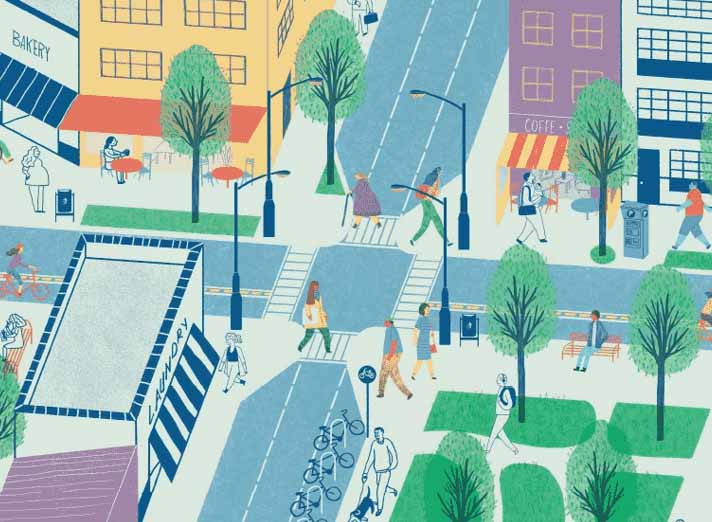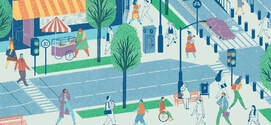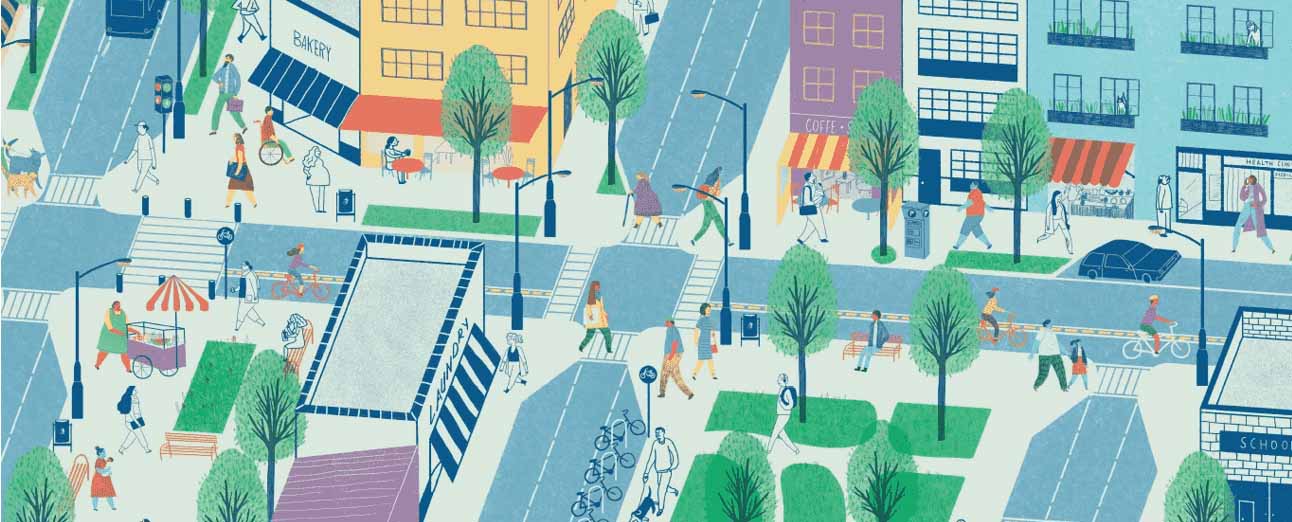 Another summer, another year of traffic chaos. Photo: Marie Aberle
Another summer, another year of traffic chaos. Photo: Marie Aberle ANOTHER year of stressful Cowes traffic chaos – can things be done differently?
In a recent discussion on the traffic and parking chaos and general stress that occurs every busy season in Cowes, one person quoted an expert on the subject: “Cars don’t shop. People shop.”
What we are doing now, and have done for decades, is no longer sustainable. Various plans have been mooted to fix the Cowes CBD’s problems, but they tend to be piecemeal – covering up the symptoms rather than dealing with the cause of the disease. So what is to be done? After canvassing various friends for their ideas, I invite you to picture this vision of Cowes reimagined.
Attractive rubbish/recycling bins are readily accessible within the CBD and emptied according to need, not just a contractor’s schedule. Bottle recycling banks are prominent in supermarkets and other venues for the ever-decreasing number of people who continue to use plastic drink bottles. Single use plastic is rarely seen in Cowes at any business. Participating businesses or public facilities provide clearly signed drop-off points for all manner of small recyclable items – batteries, ink cartridges, old mobile phones, etc.
Olive Justice Place is a vibrant splash of floral colour and a place of relaxation within the bustling town. A tasteful small array of signage is located there featuring QR codes linking visitors to websites and videos giving further information 24/7 about sites and personalities associated with the history of the town. Both open and undercover seating is provided there for people to explore the information further, to meet up with friends and families, or for people to just sit quietly and wait for a pre-arranged lift. An informal grassed area lets children run around and let off steam.
The Cowes Cultural Centre is a welcoming and beautifully landscaped space; not just for lots of cultural activity, but with a quiet separate space inside for prayer and meditation, and with another comfortable place for women from various cultures who wish to breastfeed their babies and toddlers in private.
| On-street car parking consists of bays, each for 3 to 4 disabled-sized car parking spaces, placed at approximately 50m intervals. There is no other on-street car parking for private vehicles. Apart from single lanes either way for essential traffic, the remaining road surface is available for pull-off areas for delivery trucks and commuter buses. Bicycle parking racks are frequent and prominent. No longer hemmed in by bitumen with their root systems compacted by vehicles, the golden cypresses have plenty of water absorption space around their bases and are flourishing. | "Every city should have a law of two words. Pedestrians first." |
Electric buses, sporting livery of striking Phillip Island images, drop people off at strategic points around the CBD. Drivers can use a microphone to give occasional commentary along the route where appropriate, while a recording announces locations around each stop as the stop is being approached. The drivers are much loved, respected and a valuable part of the bus users’ experience.
The bus passengers have parked out of town at a park and ride car park featuring indigenous Phillip Island vegetation that acts as a kind of arboretum. Natural building materials for waiting shelters include roof top solar to power lighting and ticketing machines. The park has an integrated waste water management system used to water the arboretum plants and discharge excess water safely into the stormwater system. There are lots of electric vehicle charging stations and a dedicated section for disabled travellers to wait for their suitable taxi or other transport to arrive. Maps at the car park, also available via an app, clearly show users what is located near each bus stop.
Within the park, there is a dedicated section for people with dogs, adjacent to a group of off-leash dog exercising areas. These feature trees and bushes, both short and longer grassed areas, running water and water fountains for humans and dogs, sand areas, agility play equipment for adventurous dogs and bench seating for owners to sit and watch or pat their dogs. Each separate dog-exercise section is fenced off – one for small or nervous dogs, one for boisterous dogs, one for dogs that are not very good with other dogs, and a smaller one for dogs that have not yet been trained to come immediately when called.
Back in the town, the purpose-built Phillip Island Community and Learning Centre in Warley Avenue is a community focal point serviced by the bus. It has its own electric bus to transport participants to the community garden and other activities.
Business owners express their cultural diversity not just through their stock or menu but through the appearance of their shops or cafes fronting the street, their signage and their interior design. Each shop or business has its own distinctive character, reflecting the true diversity of our community and our visitors. The whole is made coherent by the public art works and majestic golden cypresses.
Unhindered by the constant fight with traffic, or the fight to cross the road with children in tow, residents and visitors happily walk about the town, stopping and chatting, smiling to strangers, resting on the street benches or seating at Olive Justice Place and the Cultural Centre to watch the happy passing parade.
Everyone notices the change for the better. Just as people go away to get away from devices, and feel much better for it as they wind down, so our visitors unwind, knowing their car is secure and within easy reach by a quiet bus ride through our fascinating, vibrant but relaxed town. People arrive at their destination in town without a 20-minute crawl along the main street. Shop owners and workers are no longer abused by stressed-out customers.
The town comes alive, instead of constantly having its batteries drained at the end of every day of every holiday season. Cowes is cleaner, greener, brighter, more climate change adaptable and less polluted.
You may or may not like our vision. But given that Bass Coast Shire Council now owns quite a bit of land outside the town, and there is nothing not currently achievable in our vision as far as technology or engineering is concerned, all this is doable within a fairly short time frame.
If we are to make our main town, our main shopping area, a truly lovely place to be, instead of a bland and stressful place just like any other seasonal hotspot – well, folks, we really do need to Think Outside The Box!


